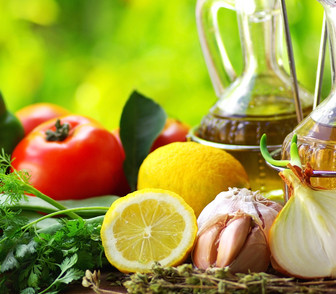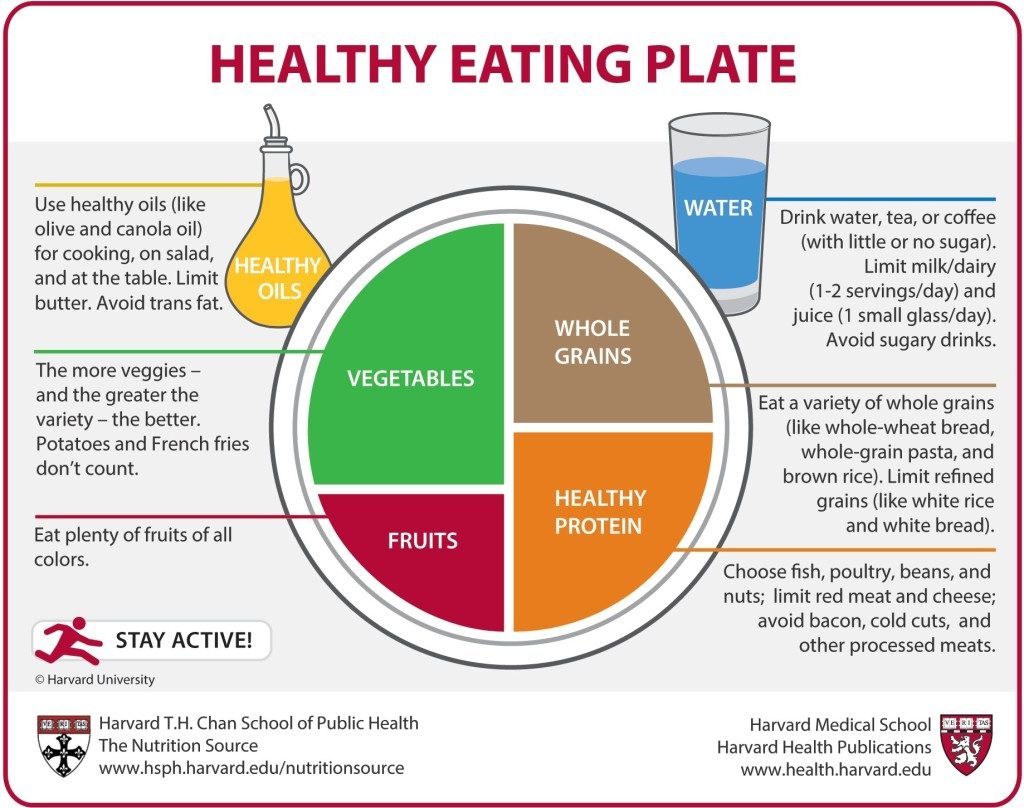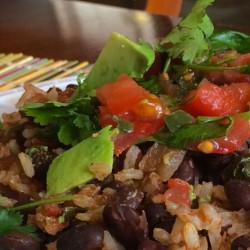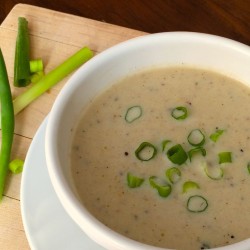Tuesday, November 15, 2011
When it comes to what to eat, the devil’s in the dietary details. This article contrasts the nutrition advice in Harvard’s Healthy Eating Plate and USDA’s MyPlate to help today’s eaters make the soundest food choices.
Note: while the original post was written in response to the 2010-2015 dietary guidelines, the two plates discussed herein have not changed, thus the points in this article remain. Last updated: 1/9/17.
Love food? Who doesn’t! Wondering what to eat? Who isn’t!
 From farm to fork, what we eat matters. This is the subject of a number of courses I’ve taught over the years, including one I’m currently co-teaching at Harvard Extension School. In these classes, it’s my goal to help students understand the personal, local, and global consequences of their day-to-day food choices. But student or not, all of us are left with the same inevitable question each evening: What should I make for dinner? One place to start tackling this ostensibly straightforward question is to consider how food impacts our individual health—that is, nutrition.
From farm to fork, what we eat matters. This is the subject of a number of courses I’ve taught over the years, including one I’m currently co-teaching at Harvard Extension School. In these classes, it’s my goal to help students understand the personal, local, and global consequences of their day-to-day food choices. But student or not, all of us are left with the same inevitable question each evening: What should I make for dinner? One place to start tackling this ostensibly straightforward question is to consider how food impacts our individual health—that is, nutrition.
A Tale of Two Plates: USDA’s MyPlate and Harvard’s Healthy Eating Plate
Let’s first consult the current Dietary Guidelines for Americans, published by the Department of Health and Human Services and the Department of Agriculture every five years. In fact, the USDA has been producing food guides since 1916, which have taken on a variety of shapes and messages over the decades. Many people are familiar with the 1992 Food Guide Pyramid, which quantified serving recommendations and highlighted variety, moderation, and proportion. Steps were added to the side of the pyramid to reflect the importance of physical activity in 2005, and the name was changed to MyPyramid. Serving recommendations were removed but could be personalized online across 12 different calorie intake levels (hence the “My”).
To reduce the complexity of translating the guidelines into everyday diets, the pyramid became a plate in June 2011 and now includes five food groups: four on the plate itself (fruits, vegetables, grains, and protein) and a glass / small dish labeled “dairy.” The graphic and messages of MyPlate are undoubtedly easier to comprehend than those in MyPyramid. As well, the familiar serving vessels make it simple to apply them to meals by depicting the relative proportions of key food groups.

From a nutrition science perspective, however, there are a lot of critical details missing from the USDA’s plate. These omissions beg the question: With so much not on the plate, does this new icon accurately represent the latest science of healthy eating? In other words, when does “simple” become “simplistic”?
Enter the Healthy Eating Plate, published by the Harvard School of Public Health’s Department of Nutrition in in September 2011.
Both Plates Star Plant Foods
Harvard’s Heslthy Eating Plate is similar to the USDA’s MyPlate in many respects. Fruits and vegetables comprise half of both plates, reflecting the importance of a plant-based diet in reducing risks of a number of chronic diseases. Unquestionably, one of the single best things you can do for your health is consume more vegetables and fruit, which are nutrient-dense sources of vitamins, minerals, water, and fiber. However, the Harvard plate also points out that variety and color matter: plants have different bioactive components that have diverse health effects. Thus, the richer the palate of your plate, the greater the nutritional benefits.
Fruits are also much sweeter than most vegetables and are a source of sugar. They should therefore be consumed in smaller quantities than vegetables. This is an important point, and the placement and proportions of the vegetable and fruit wedges on Harvard’s plate better represent this distinction compared to MyPlate.
But do I need to eat my vegetables steamed? (Yawn.) And can I use salad dressing? (Please?) Harvard’s version addresses these questions with its cruet of vegetable oil in the top corner. The picture and text also make clear that all fats are not created equal. So don’t feel guilty for adding healthy fats to your diet. They add flavor, enhance absorption of nutrients, and have been shown to decrease your risk of cardiovascular and other diseases when substituted for saturated fats, trans-fats, and carbohydrates.

Grains and Protein: A Few Caveats
The two plates also share the grains and protein categories, but Harvard’s plate adds the qualifiers “whole” and “healthy.” Are these additional terms necessary? The short answer is yes. Whole grains preserve the nutritional richness of the entire kernel, which includes fiber and a host of vitamins and minerals. (For more on whole grains, search my blog for recipes like this one and start with this piece.) Refined grains, in contrast, are mainly composed of starch, which acts much like table sugar when digested and has been associated with increased risk of insulin-related diseases such as type 2 diabetes and heart disease. “Healthy” protein sources tend to be lower in saturated fat and sodium and higher in polyunsaturated fats and fiber.
All that said, MyPlate was designed to present the basics of healthy eating in an accessible way but was not intended to provide specific dietary advice. In fact, if you visit the USDA’s website, you’ll find many more details and great tips on which grains and proteins are healthier choices that are largely consistent with the messages on Harvard’s plate. Thus, the differences between MyPlate and the Healthy Eating Plate are less about the coherence of the science and more about the level of complexity that is needed to best inform individual food choices.
Dairy Matters: It’s Not a Moo(t) Point
One area where MyPlate and the Healthy Eating Plate differ on the science is in the quantity of dairy in a healthful diet. Notice the different beverage cut point between the two plates? Dairy is a rich source of nutrients such as calcium, which is critical for bone health. Calcium can be obtained from other foods, however, and scientists disagree about how much dairy is needed in human diets, if at all, and whether dairy intake is associated with health risks. There are also multifarious matters associated with milk production, including farming conditions for both cattle and workers, and the putative influence of the dairy industry and lobbies on the dietary guidelines. And I would be remiss if I didn’t mention that many people have ethical and moral issues concerning the consumption of animal products.
Harvard’s plate, on the other hand, recommends limiting dairy intake and instead emphasizes the benefits of water. Water is essential for life and, while much of what we need for hydration is obtained in the water-containing beverages and foods we consume, it’s a great go-to beverage that quenches your thirst and helps you feel satiated without adding calories. Many studies have also found that coffee and tea are quite healthful and help meet water needs. And most scientists agree that consuming sweetened beverages like soda and fruit drinks adds significant sugar and calories to a diet and should be minimized or omitted, especially given the current obesity epidemic.
So for all of the aforementioned reasons, dairy is probably one of the more difficult topics in nutrition. The politics and polemics surrounding food production and dietary guidelines certainly don’t help matters. It’s also a wonderful example of how what we eat matters far beyond our individual health, an issue neither plate addresses.
USDA’s MyPlate: A Step Forward
I believe that MyPlate is in many ways a step forward, despite the omission of healthy fats and arguable over-emphasis on dairy. It shows individuals what their plate should actually look like in an accessible, familiar way. Plant-foods are appropriately emphasized. And, although not explicitly stated, the guidelines behind the graphic are based on sound science. If a majority of Americans followed just the vegetable and fruit guidelines, for example, it would be a major advance in health and nutrition.
However, the “go-to” graphic that represents what we should be eating should not leave out key qualifying terms (such as “whole” grains) that rely upon the consumer to fill in the gaps in an environment dominated by media sound bites and misinformation. MyPlate thus crosses the line from simple to simplistic, in my view, and even has the potential to mislead. As with most things, the devil is in the details.
Yes, Harvard’s Healthy Plate is more complex than MyPlate, but it is actually a remarkably succinct summary of the current state of nutrition knowledge and provides necessary information to guide healthy food and beverage choices that will improve your health and decrease your risk of many chronic diseases.
Translating Science to Your Dinner Plate: Help is Here!
All that said, if your plate brims with vegetables and fruit, whole grains, and healthy fats and proteins, you’re heading in the right direction. To be sure, there are many more reasons why what we eat matters–such as the local and global impacts of our food choices. These are topics that are worthy of your consideration when choosing what to eat, and I discuss these broader concepts in nutritional ecology here on my blog as well. For help in applying sound nutrition science to your own plate in delicious and sustainable ways, from farm to fork, I hope you continue reading my blog so I can help you in your journey. This is, in fact, my mission. You’ll undoubtedly improve your own health.

And, acting together, we just might even change the world, one delectable bite at a time.
—
Learn more about food personality and health expert Dr. PK Newby here, or her experience as a nutrition scientist, professor, and consultant here. Or click here if you just want to ogle food porn featuring plant-based, globally inspired cooking.
Originally published on Harvard University Extension School’s blog on 30 September 2011. Harvard Eating Plate Copyright © 2011, Harvard University. For more information about The Healthy Eating Plate, please see The Nutrition Source, Department of Nutrition, Harvard School of Public Health, www.thenutritionsource.org, and Harvard Health Publications, www.health.harvard.edu.





“good stuff” –
Thanks Jack!